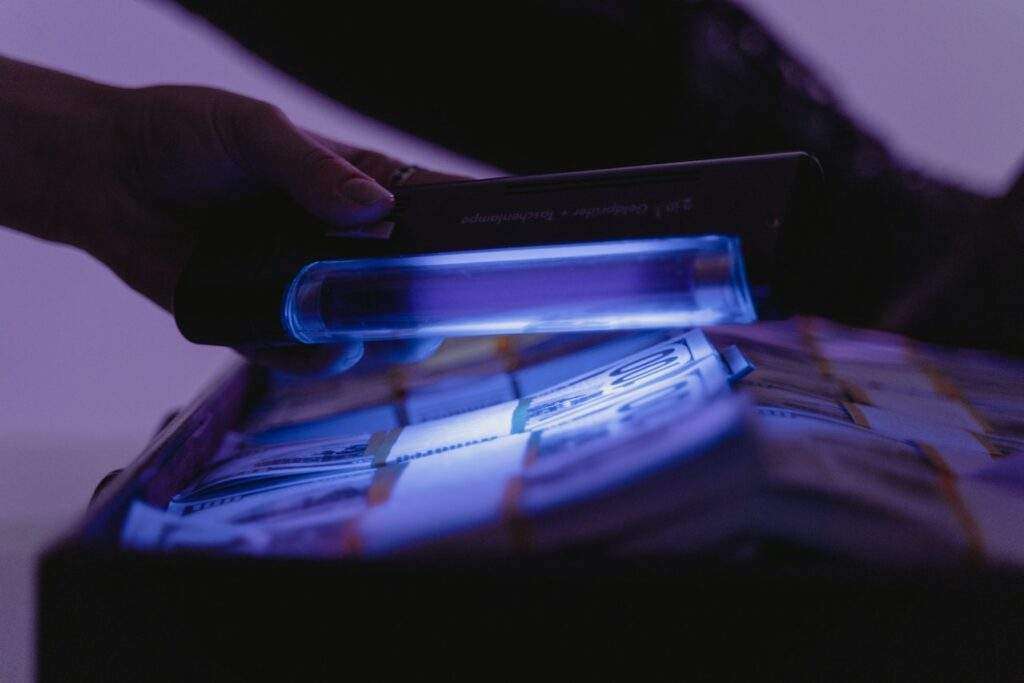Radiation is known to be one of the most active properties of science existing on earth. Depending on its state and purpose, it is considered vital or detrimental. At just the speed of light, radiative particles can travel through its wavelengths and could cause an effect on their surroundings. One of these effects is to serve as a tool in examining objects.

A study of resources exhibited in an element, compound, or mixture may require complicated procedures to succeed. Using the interaction with specific radiation frequencies, you can precisely measure or study the properties or material of an object. Generally, this process is called Spectroscopy. In short, spectroscopy results from the interaction and incidence between light and matter.
This article will discuss the frequency radiation tool, specifically Ultraviolet-Visible Spectroscopy. Continue reading to learn more.
Concept of UV-VIS Spectroscopy
Analyzing the amount of light absorbed by a substance is possible with UV-Vis Spectroscopy. Generally, it does this by comparing the quantity of light that permeates a sample to the amount of light that absorbs a blank. This method is sufficiently adaptable to be applied to a broad range of sample substances, from solutions to solids, thin films, and even glass.
Since scientists may easily establish substance amounts by UV-visible spectroscopy, they can analyze the rate of the reaction and construct rate equations with which a mechanism might be postulated. This basis of the Ultraviolet-Visible Concept is supported by the amplification of visible light or ultraviolet light by biological components that lead to the generation of unique spectra.
The Spectrometer
A spectrometer can recognize and interpret light waves. With the assistance of a spectrometer, scientists can measure a material’s physical characteristics over spectra. A spectrometer can recognize and interpret light waves.
Scientists often load a liquefied specimen of the object they want to study into the spectrometer. The spectrometer isolates the light into its constituent wavelengths as it runs through the dissolved particle. Generally, the result is many diverse colors when checked via a cylinder.
Its ability to distinguish between these many light wavelengths may enable scientists to identify the product’s nature. Spectrometers can process both lights and object samples. Astronomers also use spectrometers for light space and also to analyze star composition. However, a spectrometer has various types, are the following:
- Mass Spectrometers
- Nuclear Magnetic Resonance Spectrometers
- Optical Spectrometers
- Electron Spectrometers
Purpose of the Spectrophotometer
Spectrophotometers, through distinct frequencies, can precisely determine the light intensity. The instrument contains a spectrometer to measure the volume and spectrum of light and other waves entering the tool.
A Spectrophotometer fluoresces through a chamber and filters the wavelengths using a beam. The detector monitors the level of light that has infiltrated the sample. Generally, the results may either become percent transmission or unit for absorbance. Five types of a spectrophotometer are the following:
- Fluorescence spectrophotometer
- Infrared spectrophotometer
- UV-VIS spectrophotometer
- VIS spectrophotometer
- Atomic absorption spectrophotometer
Still interested in spectrophotometers? You can check out Agilent UV VIS Spectroscopy and learn more about them.
3 Basic Utilization of UV-VIS Spectroscopy Today
Ultraviolet-Visible Spectroscopy is very vital when it comes to humans and science. Especially in the recent generation, when technology has propagated and developed with enhanced human skills, UV-VIS spectroscopy has become more efficient. The following are the primary uses of UV-VIS spectroscopy:
1. Monitoring Pharmaceutical Efficacy
With the aid of UV-Vis spectrophotometry, scientists can quantify a range of critical safety variables, such as the Active Pharmaceutical Ingredients (API) estimation. As UV-Vis spectrophotometers can provide excellent insight, they are progressively being employed by pharmaceutical businesses as an inherent component of the service process throughout the production line.
Spectrophotometry’s diagnostic features make it a practical tool for manufacturing product testing, although it’s also a solid option for a broad range of tests. The molecular structure of medicine might become unsafe if it subjects to external stimuli such as light, humidity, dissolution, etc. It might be unsafe even though the drug perfectly formulates and stable when it was first produced.
2. Food Industry Implementation
Scientists seek other uses for spectrophotometers almost daily, and the technology extensively adopts for manufacturing quality monitoring. Fermentation procedures and chemical selections are just two aspects that influence the final service performance in the field of beer.
Pigment, aroma, roughness, and overall crude fiber are now just a few of the many qualities that may apprais by UV-VIS spectrophotometry. With this data, companies can assess their product on set measurements and make necessary modifications. Spectrometric science continuously showed progress in the brewery enhancement industry and utilized and guaranteed adequate quality of their goods.
3. UV-VIS Spectroscopy Techniques
Ultraviolet/visible (UV/VIS) spectroscopy is an effective approach, although it typically employs in collaboration with other measuring equipment. Scientists can receive more from applying techniques that match each other rather than employing only one.
Nuclear magnetic resonance is another method in tandem with UV/VIS spectroscopy. To better explain the acid-based chemistry of tightly hydrocarbon ions in aprotic environments, German experts published their data in a journal about the feasibility of unified UV NMR techniques in reaction detection.
UV-VIS Spectroscopy Continues to Improve
Ultraviolet-Visible Spectroscopy is more than just a simple tool in science. In record, scientists and experts continuously enhance their skills and the UV-VIS Spectroscopy properties to create succeeding exercises with this matter. With the better and proper use of the spectroscopy tool, betterment for human biology and recreation may constantly proliferate.